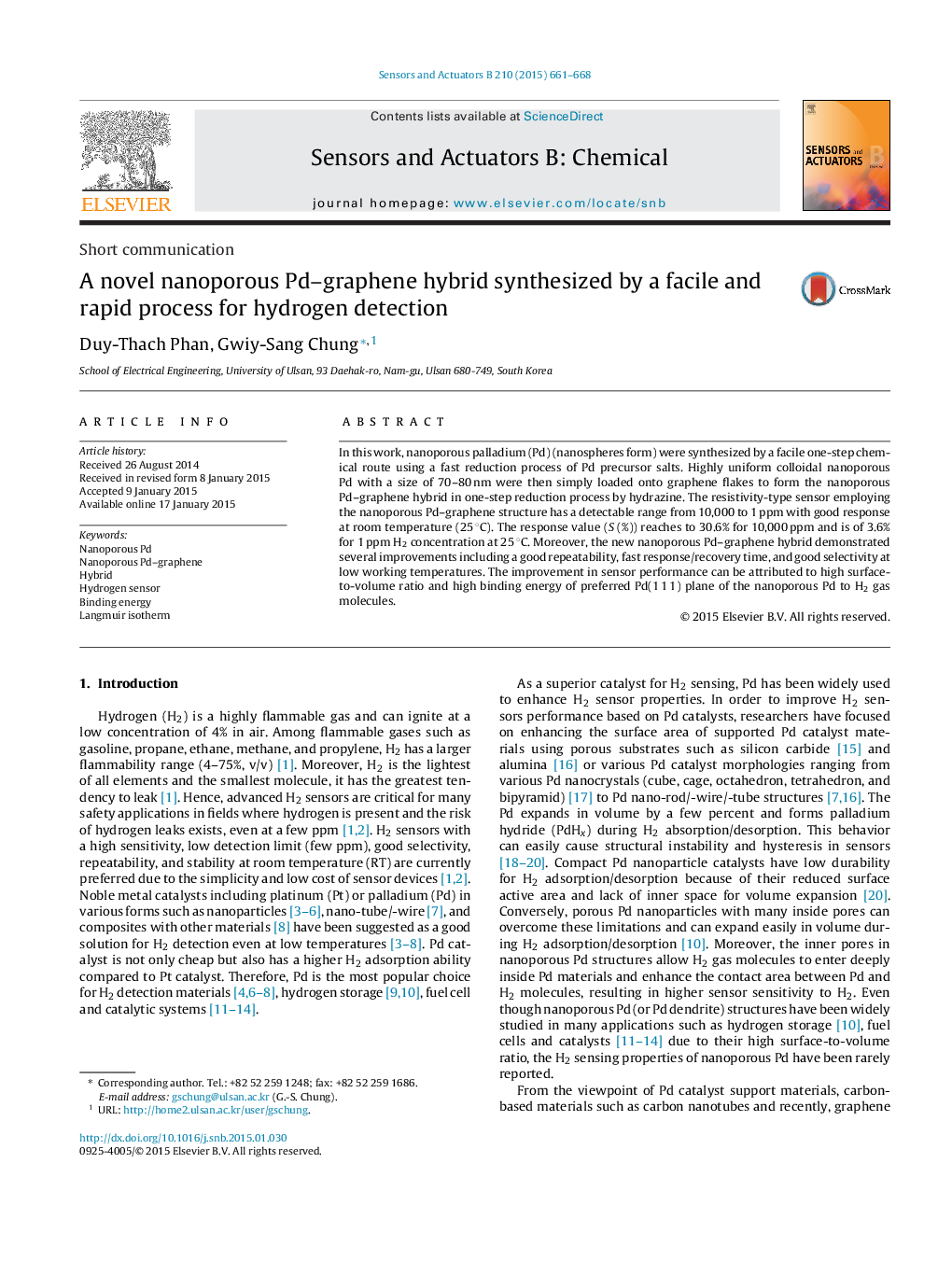| Article ID | Journal | Published Year | Pages | File Type |
|---|---|---|---|---|
| 741925 | Sensors and Actuators B: Chemical | 2015 | 8 Pages |
In this work, nanoporous palladium (Pd) (nanospheres form) were synthesized by a facile one-step chemical route using a fast reduction process of Pd precursor salts. Highly uniform colloidal nanoporous Pd with a size of 70–80 nm were then simply loaded onto graphene flakes to form the nanoporous Pd–graphene hybrid in one-step reduction process by hydrazine. The resistivity-type sensor employing the nanoporous Pd–graphene structure has a detectable range from 10,000 to 1 ppm with good response at room temperature (25 °C). The response value (S (%)) reaches to 30.6% for 10,000 ppm and is of 3.6% for 1 ppm H2 concentration at 25 °C. Moreover, the new nanoporous Pd–graphene hybrid demonstrated several improvements including a good repeatability, fast response/recovery time, and good selectivity at low working temperatures. The improvement in sensor performance can be attributed to high surface-to-volume ratio and high binding energy of preferred Pd(1 1 1) plane of the nanoporous Pd to H2 gas molecules.
